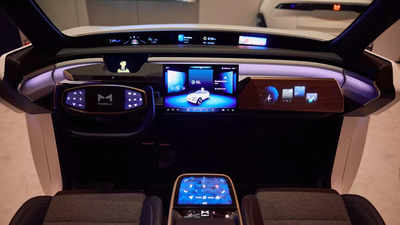
This article is authored by Chiara Delporto, VP Advanced Sales, SDV at Marelli.
The mobility landscape is undergoing a significant transformation with the rise of Software Defined Vehicles (SDVs), a transformative approach revolutionizing vehicles into dynamic platforms of innovation and connectivity. It represents more than just an evolution; it’s a complete reimagining of what a vehicle can be, placing software at the forefront of vehicle design and defines functionality and user experience.
Traditionally, vehicle development followed a sequence starting with vehicle architecture, then electrical/electronic (E/E) architecture, and finally software architecture. While effective in the past, this step-by-step process no longer meets the complex demands and expectations of today’s vehicles. SDVs require a paradigm shift, prioritizing the definition of software architecture. This software-first approach ensures deep integration of digital cross-domain capabilities, rather than simply adding them on.
Audi Q8 Review: Brilliant mix of Comfort and Sportiness | TOI Auto
One further core transformation in SDVs is the shift from a traditional “car-centric” to a “user-centric” approach. Customer experience is leading technology advancement particularly in the realm of software marking a significant paradigm shift.
SDVs offer unparalleled flexibility and innovation through integrated software, enabling vehicles to enhance features over time, adapt to new technologies, and provide personalized user experience.
We envision the SDV revolution resting on three pillars: scalable hardware architecture, service oriented software, and cloud virtualization. Together, these elements form the backbone of a new automotive ecosystem supporting continuous upgradability and integration of new functionalities post-manufacture.
Scalable Hardware Architecture ensures modularity, allowing vehicles to adapt and expand with diverse requirements and technologies. This flexibility paves the way for efficient incorporation of future advancements, extending vehicle lifecycles. Offered in tiered configurations — Lean, Pro, and Elite — this architecture adapts to various market needs.
Service-Oriented Software is pivotal in decoupling software from hardware, enabling unparalleled interoperability across systems and platforms. This shift towards software-centric development supports vehicles capable of receiving updates and new functions long after production, mirroring the ever-evolving nature of digital devices. Today’s software portfolio includes fully portable, AUTOSAR compliant solutions that integrate seamlessly across vehicle domains. Covering the industry broadest set of domain expertise – smart lighting, vehicle management, ride dynamics, advanced propulsion and thermal management –
Cloud Virtualization accelerates development for carmakers through cloud replicas. By virtualizing hardware, carmakers can test, validate, and deploy new features in a cloud environment, accelerating innovation while maintaining safety and reliability. This global presence underscores the versatility of SDVs and their potential to transform mobility worldwide. The aim is for vehicles to be more connected, efficient, and adaptable, promoting a greener, smarter, and more inclusive future of mobility. The future is beyond just the destination, it’s about making the journey an experience, in ways previously unimaginable.
Disclaimer: Views and opinions expressed in this article are solely those of the original author and do not represent any of The Times Group or its employees.